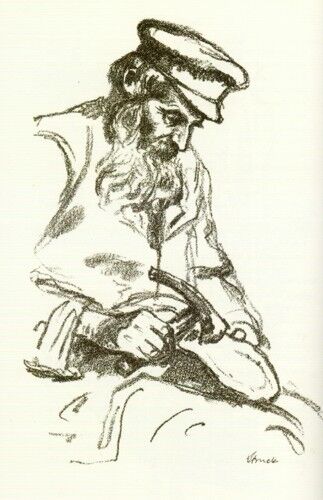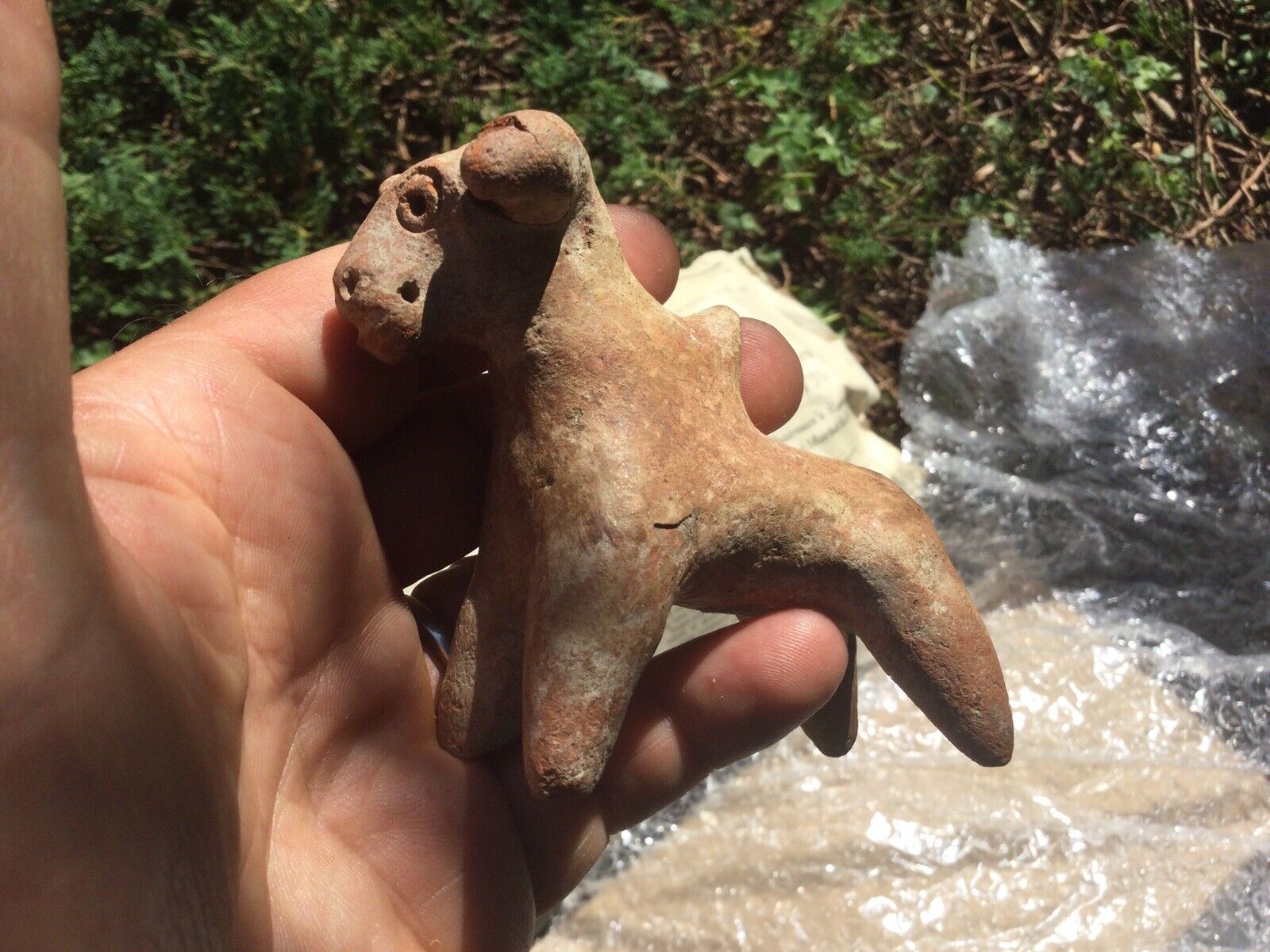-40%
Early 20th Century WWI-Nazi Life Culture of East European German Lithuanian Jews
$ 47.51
- Description
- Size Guide
Description
The Face of East European Jewry by Arnold Zweig (Author), Noah Isenberg (Editor), and Hermann Struck (Illustrator).NOTE
: We have 75,000 books in our library, almost 10,000 different titles. Odds are we have other copies of this same title in varying conditions, some less expensive, some better condition. We might also have different editions as well (some paperback, some hardcover, oftentimes international editions). If you don’t see what you want, please contact us and ask. We’re happy to send you a summary of the differing conditions and prices we may have for the same title.
DESCRIPTION:
Hardcover with dustjacketoftcover. Publisher: University of California (2004). Pages: 186. Size: 9¼ x 6¼ inches; 1¼ pounds.
A landmark work in the sphere of modern German-Jewish cultural life, “The Face of East European Jewry” is also a window on a lost world. First published in 1920 and never before translated into English, this work brings together the impassioned writing of one of Weimar Germany's most celebrated authors, Arnold Zweig, and the equally poignant illustrations by renowned graphic artist and lithographer Hermann Struck.
As members of the German wartime press division at Ober-Ost, both Zweig and Struck spent the final years of the First World War on the eastern front, on the outskirts of the Lithuanian city of Kovno (Kaunas). There they observed the life of the so-called Ostjuden, or East European Jews. Reflecting the rise of Zionism and the experience of the war, “The Face of East European Jewry” offers a dramatic and moving perspective on the short-lived romance of disenchanted Western Jews with the idea of a more authentic, more meaningful lifestyle in the East. One of the earliest interventions in the vexed relationship between German Jews and their Eastern neighbors, this book brings to life the world of the shtetl that did not survive the twentieth century.
CONDITION
: NEW. New hardcover. University of California (2004) 186 pages. Unblemished, unmarked, pristine in every respect. Pages are pristine; clean, crisp, unmarked, unmutilated, tightly bound, unambiguously unread. Satisfaction unconditionally guaranteed. In stock, ready to ship. No disappointments, no excuses. PROMPT SHIPPING! HEAVILY PADDED, DAMAGE-FREE PACKAGING! Selling rare and out-of-print ancient history books on-line since 1997. We accept returns for any reason within 14 days! #8427a.
PLEASE SEE DESCRIPTIONS AND IMAGES BELOW FOR DETAILED REVIEWS AND FOR PAGES OF PICTURES FROM INSIDE OF BOOK.
PLEASE SEE PUBLISHER, PROFESSIONAL, AND READER REVIEWS BELOW.
PUBLISHER REVIEWS
:
REVIEW
: Originally published in 1920, Arnold Zweig's The Face of East European Jewry provides a window into East European Jewish life. This is the first translation of the work into English, with the original illustrations by Hermann Struck. - See more at: https://www.betterworldbooks.com/the-face-of-east-european-jewry-id-9780520215122.aspx#sthash.xddLB6hU.dpuf
REVIEW
: First published in 1920 and never before translated into English, this work brings together the impassioned writing of one of Weimar Germany's most celebrated authors, Arnold Zweig, and the equally poignant illustrations by renowned graphic artist and lithographer Hermann Struck.
REVIEW
: Arnold Zweig (10 November 1887 – 26 November 1968) was a German writer and anti-war and antifascist activist. He is best known for his six-part cycle on World War I.
REVIEW
: Arnold Zweig (1887-1968) was a novelist, critic, and writer on Jewish and cultural themes. He emigrated to Palestine in 1933 but returned to East Berlin in 1948. Hermann Struck (1876-1944) was an artist and printmaker. Noah Isenberg is Chair of Humanities at the New School in New York City. He is the author of Between Redemption and Doom: The Strains of German-Jewish Modernism (1999).
PROFESSIONAL REVIEWS
:
REVIEW
: Published in 1920, this book by Arnold Zweig positioned itself as a reference for the understanding of Eastern Jewry in the German language world along the entire Nazi era. This book is a fruit from the warlike experiences of its author during his service in the OberOst in the First World War and it offers a demanding intellectual profile of the widespread, but really undefined, category of Ostjudentum, thanks to its beautiful illustrations as well. Nonetheless, beyond this cultural line of understanding, contradicting some common ideas of the anti-Semitic German imagery of the post war years, this book offers, beyond its intentions, a confirmation of other common ideas of that anti-Semitic thought.
To begin with, Zweig's reasoning goes on several understanding paths, organizing what he has watched, with a widely diffused anthropological interest among the German troops, in the Eastern front. Constant in his observation is the parallel between eastern and western Jewry. According to Zweig, the eastern Jewry is not understandable without its permanent religious reference, a reference rather lost in the western Jewry. The Ostjudentum thinks of itself as a historical fragment of eternity, it has a story of suffering finding its global signification only in the meditation of the Talmud. The first three sections of the book have the eastern male Jew as the only character because he is, as a Talmudist or a simple believer doing his job, the guardian of the comprehension enlightening the night of the history. His clothing and his praying posture are a shield defending him from the anguish of his life always threatened by poverty, as a single, and by politics and intolerance, as a member of a community. In its wretched living conditions, the Ostjudentum shows to western Jewry the strength of eternal values, the only ones that let to take hold its identity while elsewhere this identity tries to disappear in the different national communities.
In the fourth and the fifth chapters the youths and the women come in the foreground. These latter are trapped in their reproductive function that eastern Jewry evaluates as the high task of the continuation of the descent, charged by God of an eternal mission; the chance of a even only slightly different sexual life or of an independent emancipation are simply not considered. The experience of these women with the war is terrible: there is no possible understanding between them and the German troops because their existence is too different from the existence of the troops.
The war causes the traumatic encounter between Ostjudentum and modernity as well, and, most of all, the need to have a discussion with socialism. Zweig affirms that socialism is the actual aim of the eternal idea of justice the Jewry has always had. If, on the one hand, the Talmudic tradition offers a religious and atemporal message of salvation, on the other it seems to offer a strength incentive to a radical innovation of the human world, secularizing the divine command. In the socialism finding its way into the Ostjudentum Zweig individuates the shape of a generational revolt. Once again a contradiction comes to light. If socialism is a part of the Jewish tradition, Zweig thinks that its international diffusion causes, for the Jews embracing it, the desertion of their tradition, the drying up of the original source.
It is here where the paradox comes to its showdown. The lyric, poetic, passionate Zweig description seems to confirm, if we read with nasty eyes, some common ideas of the anti-Semitic tradition: the idea of Judeo-Bolshevism and the prejudice of the antiquity and immobility of Ostjudentum. By this way, what, in the purposes of its author, is a book of hope and thrust in the future, can turn itself in a harsh accusation of the most dark and frightening side of the "Jewish question" for the anti-Semites of the post Great War years.
REVIEW
: First published in 1920 and never before translated into English, this work brings together the impassioned writing of one of Weimar Germany's most celebrated authors, Arnold Zweig, and the equally poignant illustrations by renowned graphic artist and lithographer Hermann Struck.
READER REVIEWS
:
REVIEW
: Writing nearly 100 years ago, Arnold Zweig had a good deal to say, but was quite a bit arbitrary and emotional in his tone. His descriptions and statements, within the context of its time, replete with partiality, it is fine. The illustrations are also very good. It is a true record of its times including the writing style and a view along the spectrum of thought of its time.
REVIEW
: Five stars. An outstanding read.
I always ship books Media Mail in a padded mailer. This book is shipped
FOR FREE
via USPS
INSURED
media mail (“book rate”). All domestic shipments and most international shipments will
include
free USPS Delivery Confirmation (you might be able to update the status of your shipment on-line at the
USPS Web Site
) and free insurance coverage. A small percentage of international shipments may require an additional fee for tracking and/or delivery confirmation. If you are concerned about a little wear and tear to the book in transit, I would suggest a boxed shipment - it is an extra .00. Whether via padded mailer or box, we will give discounts for multiple purchases. International orders are welcome, but shipping costs are substantially higher.
Most international orders cost an additional .99 to .99 for an
insured
shipment in a heavily padded mailer, and typically
includes
some form of rudimentary tracking and/or delivery confirmation (though for some countries, this is only available at additional cost). There is also a discount program which can cut postage costs by 50% to 75% if you’re buying about half-a-dozen books or more (5 kilos+). Rates and available services vary a bit from country to country. You can email or message me for a shipping cost quote, but I assure you they are as reasonable as USPS rates allow, and if it turns out the rate is too high for your pocketbook, we will cancel the sale at your request.
ADDITIONAL PURCHASES
do receive a
VERY LARGE
discount, typically about per book (for each additional book after the first) so as to reward you for the economies of combined shipping/insurance costs. Your purchase will ordinarily be shipped within 48 hours of payment. We package as well as anyone in the business, with lots of protective padding and containers.
All of our shipments are sent via insured mail so as to comply with PayPal requirements. We do NOT recommend uninsured shipments, and expressly disclaim any responsibility for the loss of an uninsured shipment. Unfortunately the contents of parcels are easily “lost” or misdelivered by postal employees – even in the USA. That’s why all of our domestic shipments (and most international) shipments
include
a USPS delivery confirmation tag; or are trackable or traceable, and all shipments (international and domestic) are insured. We do offer U.S. Postal Service Priority Mail, Registered Mail, and Express Mail for both international and domestic shipments, as well United Parcel Service (UPS) and Federal Express (Fed-Ex). Please ask for a rate quotation. We will accept whatever payment method you are most comfortable with. If upon receipt of the item you are disappointed for any reason whatever, I offer a no questions asked return policy. Send it back, I will give you a complete refund of the purchase price (less our original shipping costs).
Most of the items I offer come from the collection of a family friend who was active in the field of Archaeology for over forty years. However many of the items also come from purchases I make in Eastern Europe, India, and from the Levant (Eastern Mediterranean/Near East) from various institutions and dealers. Though I have always had an interest in archaeology, my own academic background was in sociology and cultural anthropology. After my retirement however, I found myself drawn to archaeology as well. Aside from my own personal collection, I have made extensive and frequent additions of my own via purchases on Ebay (of course), as well as many purchases from both dealers and institutions throughout the world - but especially in the Near East and in Eastern Europe. I spend over half of my year out of the United States, and have spent much of my life either in India or Eastern Europe. In fact much of what we generate on Yahoo, Amazon and Ebay goes to support The Hermitage Museum in St. Petersburg, as well as some other worthy institutions in Europe connected with Anthropology and Archaeology.
I acquire some small but interesting collections overseas from time-to-time, and have as well some duplicate items within my own collection which I occasionally decide to part with. Though I have a collection of ancient coins numbering in the tens of thousands, my primary interest is in ancient jewelry. My wife also is an active participant in the "business" of antique and ancient jewelry, and is from Russia. I would be happy to provide you with a certificate/guarantee of authenticity for any item you purchase from me. There is a fee for mailing under separate cover. Whenever I am overseas I have made arrangements for purchases to be shipped out via domestic mail. If I am in the field, you may have to wait for a week or two for a COA to arrive via international air mail. But you can be sure your purchase will arrive properly packaged and promptly - even if I am absent. And when I am in a remote field location with merely a notebook computer, at times I am not able to access my email for a day or two, so be patient, I will always respond to every email. Please see our
"ADDITIONAL TERMS OF SALE."
TRANSLATE
Arabic
Chinese
French
German
Greek
Indonesian
Italian
Hindi
Japanese
Korean
Swedish
Portuguese
Russian
Spanish
















